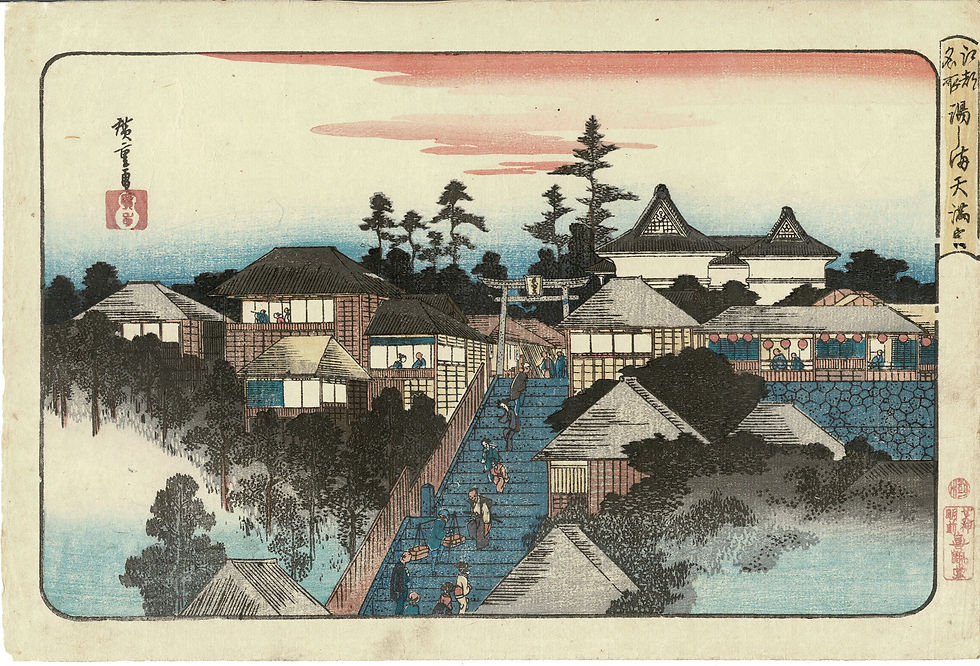艺术家:希莲·米勒
作品名:韩国钻石山
格式:欧班
签名:Hilian Miller,1928(墨水右下角)
日期:1928
15 3/8'' x 10 3/4''
良好的印象、 颜色和条件。
艺术家和版画家 Hilian Miller 于 1895 年出生在东京,父亲是外交官雷恩斯福德。她的母亲是一名英语老师,她是来日本传教的。当她在日本时,她穿着西式服装,经常喜欢 Amelia Earhart 式的领带和男子气概的西装外套。米勒成年后的大部分时间都在日本和韩国、西海岸和夏威夷度过。在美国,她以超传统的日本风格精心剪裁的木版画为自己赢得了名声。
*由 atlasobscura.com 提供,纪念Lilian Miller 这位介于东西方之间的先驱木版画家。 作者:娜塔莎·弗罗斯特,2017
Hilian Miller - 韩国钻石山
Lillian Miller was a woodblock print artist, painter, and photographer born in Tokyo on July 20, 1895. The daughter of an American diplomat, Miller entered the ateliers of Kano Tomonobu and Shimada Bokusen, studying conservative brush painting styles until 1909. With a sudden turn of events, Miller’s father was recalled from his diplomatic mission, and Lillian would go on to Vassar College to complete her training in printmaking. After graduating in 1917, she took an extended vacation to Korea before returning to Japan two years later. Miller resumed her studies under Bokusen, and in 1920 her work, In a Korean Palace Garden, entered into Imperial Salon, whereby it was awarded the Tokusenjo or exceptional merit. From 1920 onward, Miller transitioned to screen paintings, loose prints, and woodblock-printed cards, working with carver Matsumoto and printer Nishimura Kumakichi II. Such works featured commercially viable images of Korean and Japanese figures and landscapes, marketed to Western diplomats and wealthy business people. After meeting Grace Nicholson, a purveyor of antique goods, Miller established a more robust network of patrons throughout the United States. In 1929 she returned to America and spent the year exhibiting in various museums throughout the country, resulting in significant commercial success.
Miller then returned to Japan, staging several exhibitions until 1935, when she developed ovarian cancer. Political instability the following year forced her to relocate to Hawaii, where she devoted herself to watercolors and Sumi-e. After two years, Miller once again relocated to San Francisco, where access to larger markets enabled her to continue selling prints. But in the aftermath of Pearl Harbor, Miller chose to put away her brushes and devote herself to the war effort, working as a Research Analyst for the U.S. Navy. In 1942, after discovering a malignant tumor in her abdomen, Miller was hospitalized and passed away the following year. The life and legacy of Lillian Miller are unique in many respects. Miller was the only Western artist of the early twentieth century born in Asia with a mastery of the Japanese language and cultural apparatus. Financially independent, self-carving, and self-publicized, she operated without domineering hanmoto publishers. Miller further transgressed the traditional sexual, economic, and social roles, remaining single and unmarried throughout her life.
Despite the heterodoxy of her activities, Miller's work was far from transgressive. Her lyrically naturalistic prints and watercolors of Japanese and Korean figures and landscapes parallel the romanticized views of Asia at the heart of Western discourse. In contrast to her Western contemporaries, Miller's prints were devoted to East Asia's quaint, traditional, and feminine aspects. She could adapt such knowledge of Japanese painting to Western palettes, evolving a style of her own, which was both fresh and individualistic. Furthermore, her success as an artist is, in many ways, attributed to bridging the gaps between both cultural and national identities.






























